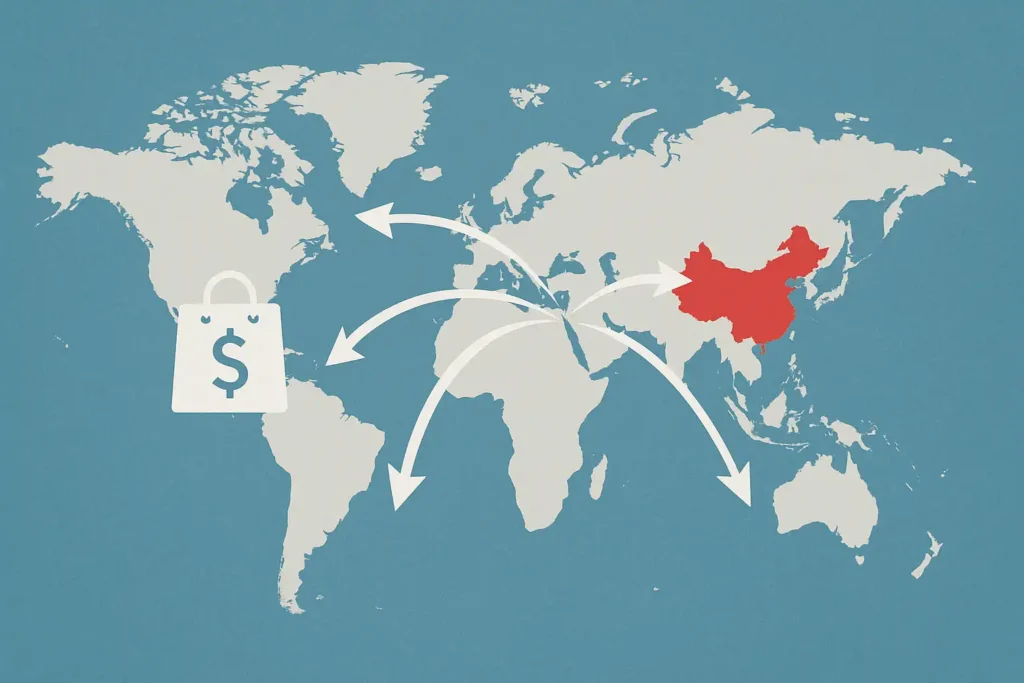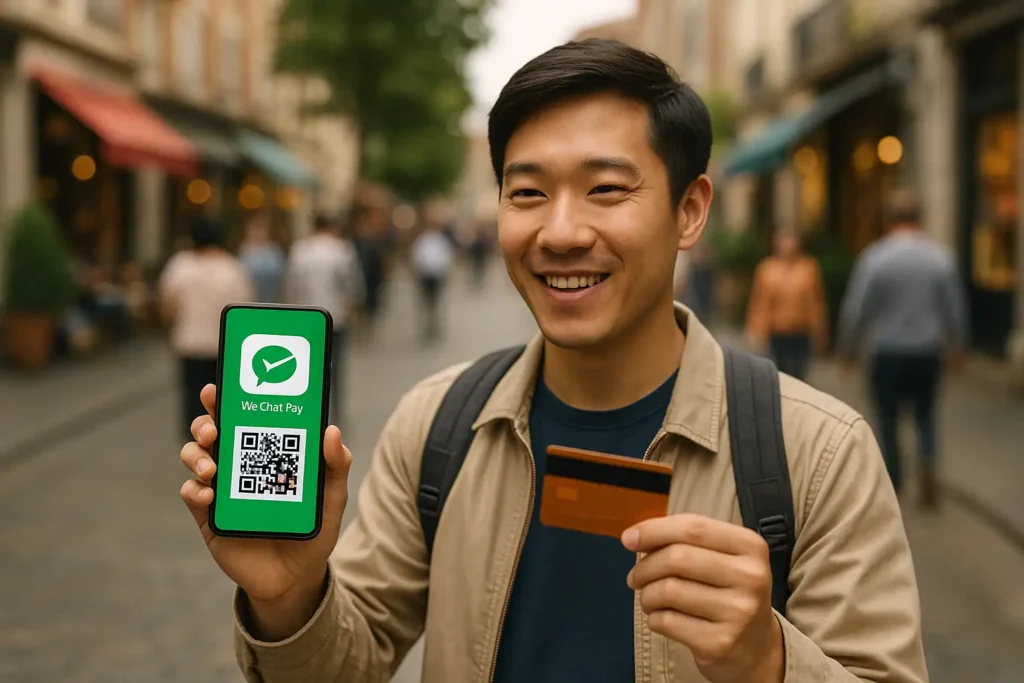China has undergone a remarkable transformation — from being “the world’s factory” to becoming a global leader in digital innovation.
If your organization is considering entry into the Chinese market or looking to refine its local strategy, it’s essential to understand how consumer behavior and technology have evolved.
Drawing on first-hand experience as living and traveling throughout China, I’ve seen the shift up close. These five key trends continue to reshape commerce, communication, and competition in China — and offer insight into how to engage one of the world’s most advanced digital audiences.
🛒1. How Online Retail Is Growing and Going Global

China is home to the largest e-commerce market on the planet. By 2025, online retail sales are projected to reach USD $1.8 trillion (Forrester).
Leading platforms like Alibaba and JD.com are driving this momentum. And their ambitions extend beyond China’s borders:
- Alibaba’s global vision is supported by its infrastructure (e.g. Cainiao) and cross-border logistics network.
- JD.com is forming strategic alliances with Google and Walmart to build a presence in global markets.
💡 What this means for global businesses:
Chinese consumers are accustomed to seamless, hyper-personalized shopping experiences. To succeed, international brands must localize not just language — but product fit, UX, and after-sales service.
💸 2. Mobile Payments in China
Digital wallets in China aren’t optional — they’re the default. Platforms like Alipay and WeChat Pay dominate nearly every transaction scenario:
- Street vendors, taxis, supermarkets, hospitals — all accept QR-code payments
- Cash and credit cards are rarely used in urban areas

Recent developments show further integration:
- Tencent + China UnionPay now enables HKD payments across mainland China
- Travelex Pay, embedded in WeChat, allows Chinese tourists to shop abroad without needing credit cards
💡 Business implication:
If your business sells to Chinese customers — online or offline — you must integrate popular payment methods to avoid friction and abandonment.
📱 3. Why Global Brands Are Using WeChat Mini-Programs for Customer Engagement
WeChat’s mini-programs function as micro-apps within the app — and have become essential tools for both local and international brands.
Leading use cases include:
- Nike’s “House of Innovation”: Offers members in-app bookings, mobile checkout, and customized experiences
- Michael Kors: Uses CRM-based mini-programs to deliver personalized perks and track user engagement lifecycle
💡 Why this matters:
These mini-apps help brands integrate directly into consumers’ digital routines. Whether it’s loyalty programs, flash sales, or appointment booking — mini-programs bring web-like functionality inside a social environment.
📌 Related Reading: How Do These 5 Global Luxury Brands Use WeChat Campaigns for Engagement?
🙅♀️ 4. Influencer Marketing in China: The Rise of Micro-KOLs and Authentic Content
China’s influencer economy remains massive, but consumer behavior is shifting.
Over-reliance on celebrity Key Opinion Leaders (KOLs) has led to:

Oversaturation of sponsored content
Declining engagement — WeChat business account open rates often fall below 5%
Consumers are becoming more discerning. They want substance, not sales pitches.
💡 Strategic adjustment:
- Focus on micro-KOLs or Key Opinion Consumers (KOCs) with niche audiences
- Highlight user-generated content, product transparency, and behind-the-scenes stories
- Deliver content that educates or inspires — not just sells
🎥 5. Video Marketing Trends in China: How Brands Use OTT and Livestreaming
China’s appetite for video — both long-form and short-form — is growing rapidly.
📊 Key Platforms:
- Tencent Video: Expected to capture 29% of video subscribers by 2025
- Youku: Serves over 500 million monthly users
- Meipai: Known for short-form content and livestreaming, particularly popular with Gen Z
Video content is used for:
Product demos
Interactive shopping
Live Q&A with brand reps or influencers

💡 Marketing opportunity:
Advertising options span pre-roll video ads, banners, and livestream event partnerships — offering high engagement with younger demographics.
China’s online ecosystem isn’t just fast — it’s mature, integrated, and evolving quickly. The winning brands are those that:
- Adapt their payment infrastructure
- Invest in localized content and UX
- Embrace tools like WeChat mini-programs
- Create authentic connections with their audiences
- Leverage video to educate and entertain
If you’re planning your next move in the region, start by understanding how digital behaviors in China differ fundamentally from Western markets — and then meet your audience where they are.
📬 Ready to Localize for China?
At AZ-Loc, we help global brands adapt every layer of their communication — from UX copy and legal disclaimers to WeChat marketing and video localization.
🎯 Whether you’re new to the China market or scaling up, we can help you translate insights into results.
🔗 Talk to our localization experts ›
